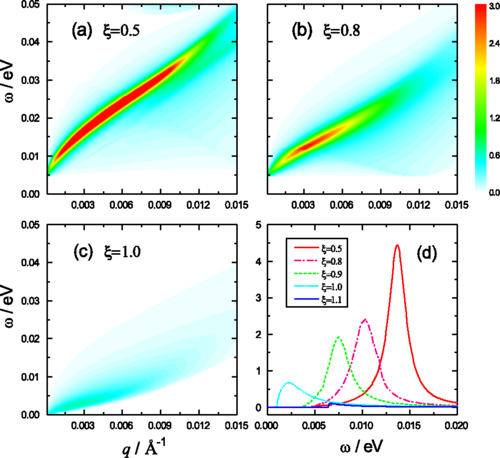Tunable Intrinsic Plasmons due to Band Inversion in Topological Materials
2018年01月23日

Figure 1 Schematically decomposing the interband transition between a pair of inverted bands into four distinct processes in the uninverted band picture. Processes (I) and (IV) correspond to the interband transitions, whereas processes (II) and (III) corresponding to the effective intraband transitions shall greatly enhance the interband coherence and hence are critical to the strong intrinsic plasmon excitation.

Figure 2 The evolution of the plasmon dispersion in the intrinsic QAH systems of thin films of V- or Cr-doped (Bi,Sb)2Te3. The color map represents the magnitude of the loss function. The black dashed lines are the analytical results from Eq. (4). The red solid lines are the particle-hole continuum boundaries. The parameters are chosen as (a) M=−10 meV, (b) M=0, and (c) M=10 meV. The chemical potential is set as μ=0.
Band inversion has led to rich physical effects in both topological insulators and topological semimetals. It has been found that the inverted band structure with the Mexican-hat dispersion could enhance the interband correlation leading to a strong intrinsic plasmon excitation. Its frequency ranges from several meV to tens of meV and can be effectively tuned by the external fields. The electron-hole asymmetric term splits the peak of the plasmon excitation into double peaks. The fate and properties of this plasmon excitation can also act as a probe to characterize the topological phases even in lightly doped systems. We numerically demonstrate the impact of band inversion on plasmon excitations in magnetically doped thin films of three-dimensional strong topological insulators, V- or Cr-doped (Bi,Sb)2Te3, and the results are consistent with our theoretical analysis.